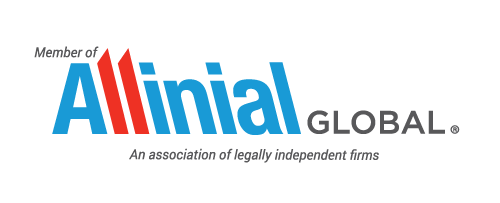The Chinese government has released a series of incentives relating to corporate income tax (CIT), value-added tax (VAT), and other taxes for Small and Medium Enterprises (SMEs). Here are seven areas where SMEs can save taxes in China.
1. Lower CIT rate for small low-profit enterprises
Small low-profit enterprises mean the enterprises that engage in non-restricted and non-prohibited businesses and meanwhile satisfy the following three criteria:
- The annual taxable income amount does not exceed RMB3 million;
- The staff headcount does not exceed 300;
- The total assets amount does not exceed RMB50 million.
Normally, China’s corporate income tax rate is 25%, but these small low-profit enterprises can enjoy a lower tax rate, namely 20%. What’s more, on 7 April 2021, in order to further support the development of small meager-profit enterprises and individually owned businesses, the State Taxation Administration (STA) made Announcement 2021 No. 8 stipulating that during the period from 1 January 2021 to 31 December 2022, for the portion of a small meager-profit enterprise’s annual taxable income which does not exceed RMB1 million, the enterprise is entitled to the reduction of corporate income tax at a tax rate of 20% on 12.5% of its taxable income. That means the actual tax rate for these enterprises is only 2.5%.
As for the portion of annual taxable income amount which exceeds RMB1 million but does not exceed RMB3 million, from 1 January 2021 to 31 December 2021, it was entitled to be computed at a reduced rate of 50% as taxable income amount and was subject to CIT at 20% tax rate. Therefore, the actual CIT rate was 10%. According to Announcement 2022 No.13 made by the Ministry of Finance (MOF) and the STA on 18 March 2022, the rate will be cut, by half, to 5% from 1 January 2022 to 31 December 2024.
2. More pre-tax deductions for MSMEs
MSMEs refer to Micro, Small, and Medium-sized Enterprises. According to Gongxinbulianqiye (2011) No. 300, the specific standards of MSMEs shall be formulated based on indicators such as staff strength, business revenue, total assets, etc., taking into account the industry features. For example, enterprises with staff strength of less than 1,000 or business revenue of less than RMB400 million in industrial areas shall be classified as small, medium, and micro-enterprises.
On 18 February 2022, the National Development and Reform Commission and the other 13 authorities jointly released several policy measures on boosting the recovery of enterprises in difficulty, including the pre-tax deduction policy. According to this policy, in 2022, MSMEs are entitled to more pre-tax deduction of costs for the purchase of equipment. Specifically, if MSMEs purchase new equipment worth above RMB 5 million and with a 3-year depreciation period, they are entitled to a one-off deduction of total purchase costs from taxable income. For purchases of equipment with a depreciation period of four, five, or ten years, MSMEs can enjoy a 50 percent deduction.
This tax relief can be enjoyed on a quarterly basis. For a loss suffered in the year but insufficient to be deducted in the year, MSMEs may carry it over to the following five taxable years for deduction.
3. VAT exemption for small-scale taxpayers
The criteria for small-scale VAT payers are annual sales of RMB 5 million or less subject to VAT. According to Announcement [2021] No.11 of the MOF and the STA, during the period from 1 April 2021 to 31 December 2022, VAT small-scale taxpayers whose monthly sales are below CNY150,000 (inclusive) are entitled to exemption from VAT.
According to the No.15 Announcement in 2022 released by the MOF and the STA on 24 March 2022, during the period from 1 April 2022 to 31 December 2022, small-scale VAT taxpayers will be entitled to VAT exemption for the taxable sales income applicable to the tax rate of 3%, and suspension of prepayment of VAT for VAT prepaying items at a rate of 3%. However, they will need to issue tax-free general invoices to enjoy this incentive. If they want to issue a special VAT invoice, they will have to waive the tax exemption.
4. VAT credits refund for micro and small enterprises
According to the Announcement No.14 of the MOF and the STA released on 21 March 2022, during the period from 1 April 2022 to 31 December 2022, the policy scope for monthly full refund of incremental VAT credits is expanded to micro and small enterprises. The existing VAT credits will be refunded in a one-off manner to micro and small enterprises.
Micro and small enterprises shall be determined based on the operating income and total asset indicators stipulated in Gongxinbulianqiye (2011) No. 300 and Yin Fa (2015) No. 309. For the enterprises to which these two documents are inapplicable, the criteria for micro-enterprises and small enterprises are annual VAT sales of less than RMB 1 million and RMB 20 million, respectively.
5. “Six Local Taxes and Two Fees” reduction
On 3 March 2022, the MOF and the STA announced to further implement the Policy of Reducing the “Six Local Taxes and Two Fees” for Micro and Small Businesses to 31 December 2024.
According to this announcement, the local governments may based on their actual situations, reduce the six local taxes and two fees within the tax range of 50% for VAT small-scale taxpayers, small low-profit enterprises, and self-employed households. The six local taxes and fees include resources tax, urban maintenance and construction tax, property tax, urban land use tax, stamp tax (excluding stamp tax for securities trading), arable land occupation tax, as well as education surcharge and local education surcharge. In addition, the tax cuts can be implemented together with other preferential policies.
6. Tax incentives for TSMEs
TSMEs (Technology-based SMEs) are the SMEs that engage in scientific and technological R & D activities by relying on a certain number of scientific and technical staff, obtain independent intellectual property rights and transform them into high-tech products or services to realize sustainable development. The TSME status has some special requirements. For example, the total number of a TSME’s employees shall be no more than 500; and either its annual sales income or its total asset amount shall be no more than RMB 200 million, etc.
According to the notice Cai Shui [2018] No. 76, with effect from 1 January 2018, losses of qualified TSMEs occurred five years before the year in which they become qualified and have not been made up shall be allowed to be carried forward to subsequent years to be made up. The maximum carry-forward period shall be ten years. For normal enterprises, the maximum carry-forward period for losses is only five years.
According to the announcement released on 1 April 2022 by the MOF, the STA, and the Ministry of Science and Technology, from January 1, 2022, on, if TSMEs’ R&D expenses are yet to go into intangible assets and therefore not recognized as gain or loss, they can enjoy an extra reduction based on 100% of the actual amount, in addition to the deduction already made on an as-is basis; if their R&D expenses are already reflected in intangible assets, they can make pre-tax amortization based on 200% of cost.
7. Tax Deferral for Manufacturing MSMEs
Manufacturing MSMEs refer to enterprises with annual sales of more than RMB 20 million (inclusive) but less than RMB 400 million (exclusive) (hereinafter referred to as the “medium manufacturing enterprises”); and enterprises with annual sales of less than RMB 20 million (exclusive) (hereinafter referred to as the “micro and small-sized manufacturing enterprises”) in the manufacturing sector under the national economic classification.
For manufacturing MSMEs, on 28 February 2022, the STA and the MOF released an announcement clarifying that the policies stipulated in the STA Announcement (2021) No.30 of allowing manufacturing MSMEs to defer payment of some taxes for the fourth quarter of 2021 would be further extended for another six months in addition to the original three months.
The taxes allowed for deferral include corporate income tax, individual income tax, domestic value-added tax, and domestic consumption tax incurred by manufacturing MSMEs in January through June of 2022 (payable on a monthly basis) or in the first and second quarters (payable on a quarterly basis) of 2022, as well as the surcharged urban maintenance and construction tax, education surcharges, and local education surcharges, but exclude withholding taxes and fees, taxes collected and remitted, and taxes and fees paid when a taxpayer applies for the tax authorities to issue invoices on its behalf.
Medium manufacturing enterprises may defer the payment of 50% of various taxes and fees specified in this announcement for six months, while micro and small-sized manufacturing enterprises are entitled to defer 100%.
[pdf id=’41176′]

